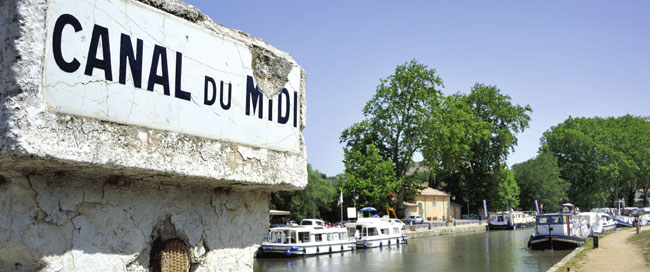For the Love of Languedoc

Annaliza Davis asks, could this hugely varied area, which offers sun, sea and ski, be the perfect place to live your French dream?
Picture, for a moment, the things you’d be hoping to gain from buying a property in France. Perhaps your French dream includes warm summers and dazzling coastlines, open countryside and breathtaking scenery. Although not all buyers could point to Languedoc-Roussillon on a map of France, this Mediterranean-facing area could prove to be the perfect place for you to realise your French dream…
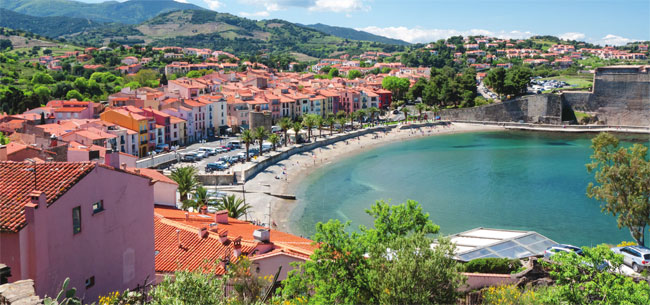
The picturesque town of Collioure, nestled in the foothills of the Pyrénées, is famed for its beaches
Locating the Languedoc
The area that we know as ‘the Languedoc’ includes the bay right in the middle of France’s south coast, where you’ll find Montpellier, then it stretches west towards Perpignan, the Pyrénées and the Spanish border. In January 2016, when France reorganised its administrative zones, Languedoc-Roussillon became part of the second largest region in mainland France, currently known as LRMP (Languedoc-Roussillon-Midi-Pyrénées).
As you might imagine from its geography alone, the Languedoc is an attractive area for house-hunters, as it offers the contrasts of seaside, countryside, mountains and cities. Would-be residents are drawn by the prospect of a warm, Mediterranean climate, while the diversity of landscapes and properties on offer means that there really is something for every taste and budget.
“There’s a huge variety of things to see and do,” says Sam Ashfield, who moved to the area in 2013. “Canal villages, places like Minerve and Carcassonne, Cathar castles, vine landscapes, the Pyrénées and, of course, the sea. But the icing on the cake is the great climate!”
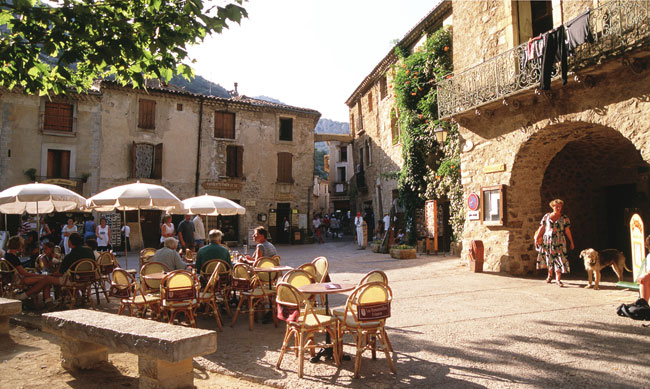
The lovely main square of Saint-Guilhemle-Désert, a fortfied village
Setting the Scene
The Languedoc is said to have all the advantages of the French Riviera without the downsides. In other words, you get the coast and the climate without the intensely populated high-rise zones and the over-commercialised tourist developments. But perhaps the most appealing thing about the Languedoc is its diverse landscape. In this single French region there are ski resorts, beaches, vineyards, historic sites galore and vibrant, modern cities.
The biggest city is Montpellier, with over 400,000 inhabitants, but there’s also Nîmes (150,000), Perpignan (120,000) and, inland, to the west of the region, the famous historic destination of Carcassonne (47,000). There are fantastic transport links to this area, too, including five airports, rail links and direct Autoroute connections.
If you’re more concerned with space and tranquillity, the Languedoc includes many rural areas that are sparsely populated, with a choice of quiet villages and sleepy hamlets that are miles away from the hustle and bustle. As for house prices, it’s possible to buy a townhouse for less than €100,000 in the Languedoc, and an inland rural property for under €50,000. More details on this later…
Regional Character
People who live in France will tell you that the regions here are so very different that they often feel like completely separate countries. For example, Brittany is nothing at all like the Côte d’Azur, so how might we describe the character of the Languedoc?
The character of the area is, of course, as diverse as its landscape, which you’ll already have gathered is very varied indeed. Your experience of the Languedoc when you’re surrounded by snowy mountains in the ski resort of Les Angles will be a complete contrast to the experience on the beach near Sète or walking along the tree-lined towpaths of the Canal du Midi.
In terms of its geography, the area can be split into two parts. The Haut-Languedoc is the section right in the middle of the south of France, bordering Provence and the Alps, and this is a mountainous area that includes the Cévennes National Park and part of the Massif Central. In contrast, the Bas-Languedoc, the area to the west, along the coast and towards Spain, is flatter and more popular with tourists.
The whole area is noted for a strong cultural heritage, not only thanks to its Occitan language and Catalan roots, but also the medieval Cathar castles and the countless examples of glorious Roman architecture that you’ll find throughout the region, such the awe inspiring Roman arena in Nîmes.
Languedoc-Roussillon is very protective of its countryside and coastal zone, and despite being a favourite destination for overseas visitors, it’s shied away from mass tourism, in order to preserve its very strong cultural identity. People who have moved to the area, whether from another country or from other parts of France, seem to fall in love with its relaxed lifestyle and the sense that, in the Languedoc, you always feel in touch with nature.
Languedoc Food & Wine
Cassoulet and beyond…
First off, it’s vital to state that cassoulet, the iconic French casserole, is a speciality of Languedoc-Rousillon. Based on beans, meat and vegetables, this famous dish is proudly served up across France, but if you want to taste the best, there’s no competition…
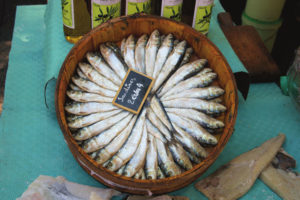
Carcassonne: The Jewel in the Crown
This historic fortifi ed town is the type of place you visit and fall dangerously in love with – it convinces you that France is where you absolutely must live. Saved from potential demolition in the 1850s, and now a UNESCO World Heritage Centre, its fairytale turrets and medieval walls have been used in many films, and are one of the most photogenic sights you’re ever likely to lay eyes on.
Sun, Snow & Breezes
When people discuss the Languedoc, the weather is bound to be a talking point. Firstly, the area’s famous Mediterranean climate, which offers temperatures that regularly rise above 30°C – sometimes 40°C – during the summer, which is usually lengthy and hot.
You can reasonably expect 300 days of sunshine a year in the Languedoc, and although winters are mild, they can be rainy. Do remember that because it’s such a large area there’ll be great variations – the mountainous areas in the highest portions of the Languedoc clearly get enough snowfall to support successful ski resorts, and the sheltered coastal spots further south will get much hotter in summer than the rural areas inland.
We should also mention the wind. The warm, wet ‘Marin’ wind comes in from the sea in the south-east, while the cold ‘Tramontane’ wind blows from the north-west and can be dramatic, even violent. Residents in some parts of the Languedoc find the gusts to be a serious problem and are very sensitive to the changes in weather, while others are relatively unaffected, so it’s worth doing your research. If you feel that strong north-westerly winds will seriously affect your quality of life, ensure the weather’s part of your criteria as you’re property hunting.
Properties: An Overview
As an extremely diverse, geographically sprawling area, Languedoc-Roussillon features almost every style of property in a myriad of location styles – from coastal The Celebrity Canal du Midi You’ve probably seen this incredibly picturesque waterway starring in such television programmes as Great Canal Journeys and Rick Stein’s French Odyssey. These small screen celebs are all fans of the 360km network of navigable waterways which connect the Atlantic to the Mediterranean, an impressive and serene canal that was constructed between 1667 and 1694 and is classed as a UNESCO World Heritage Site. Enjoy it by cruising along in a barge, cycling its towpaths or simply taking a stroll and admiring its bewitching serenity. resort towns, tiny hamlets and ski stations to large, vibrant cities such as Montpellier. Consequently, it’s no surprise that prices vary widely from one part of the area to another.
As a general rule of thumb, the closer you go to either the Mediterranean coast or to Provence, the more expensive the properties will become. Over the last decade, Languedoc-Roussillon has become a firm favourite for foreign buyers who want properties which offer great Mediterranean weather and easy access to the sea, but without having to pay Provence prices.
Happily, it’s still possible to find thoroughly affordable homes in Languedoc-Roussillon, so you can still approach a property search with the idea that you’ll be able to ‘make the most of your budget’, despite it being a highly desirable part of France: it’s all a matter of careful research and making sure that your priorities are clear.
What Are the Main Types of Property in the Languedoc?
Townhouse
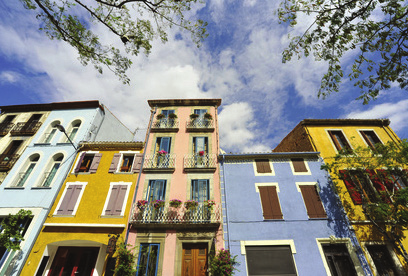
Wine Grower’s House
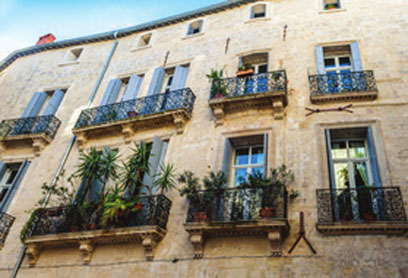
Villa
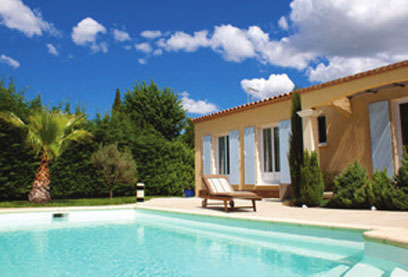
Ski Chalet
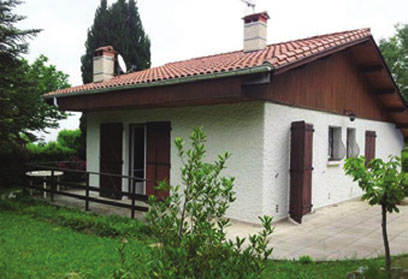
Buy to Let & Holiday Homes
Although the Languedoc has avoided mass tourism, it remains very popular with visitors who are looking for a relaxing holiday, not least because it has so much to offer, year-round, when you take the mild winters and ski resorts into account. Easy access is provided through several international airports and a good motorway network, and of course, compared to some other regions in France, the area’s warm Mediterranean climate means that the holiday rental season is quite lengthy.
For precisely these reasons, properties which operate as a gîte business are highly sought-after by foreign buyers. Depending on size, location, amenities and services offered, the going price for an existing gîte business ranges between €400,000 and €900,000.
Having found out a more about Languedoc-Rousillon, do you feel that this is the area in which to buy your French dream home?
If so, you can browse properties for sale in the area and we also have access to many more – if you’d like the details of those or want help with your search, drop the FrenchEntrée Property Team an email via [email protected] or call them on +44 (0)1225 463752.
Share to: Facebook Twitter LinkedIn Email
Related Articles
Annaliza works for herself as Agent British, writing, translating and doing voiceovers, specialising in tourism and marketing. Most of her projects are magazine articles and websites, and she also does professional training and workshops.
Leave a reply
Your email address will not be published. Required fields are marked *

